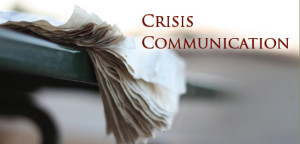A recent survey found that 86% of journalists prefer email when receiving materials from PR professionals. As communicators, it’s our job to not only ensure we’re emailing the right reporters, but also that our pitches are written in a way that draws interest.
Follow these do’s and don’ts to ensure your email pitches to reporters don’t get this response.
Improve your email-pitching skills with the following tips.
Do…
• Write the subject line as if it were the headline of a news article. Help reporters see what story you’re envisioning. Don’t waste valuable space – the first few words that appear under a new message – with lackluster subject lines like “Expert Available Immediately to Discuss …” or “News from [Company Name] …” You’ll lose reporters before they’ve even opened your message. For more tips on this, read PR Daily’s 5 subject line mistakes to avoid when emailing a reporter.
• Keep it short and simple. Similar to the structure of news releases, pitches must start with the most important information first. No one enjoys reading long emails, especially reporters. Differentiate yourself from other long-winded PR pros by keeping your message concise and easy to read. Cut down paragraphs and limit the total word count to 150 words, if possible.
• Embrace bullets. The shorter your pitch, the better. Use 3-4 bullets to highlight the specific topics your client can speak to on a given issue. Help the reporter see what could be covered in an interview.
• Provide a call to action. Immediately after the opening of your pitch, get to the point: “Would you like to speak with [Spokesperson] from [Company Name] about this trend?”
Don’t…
• Attach anything. One way to ensure your release will never be seen is to attach a Word, PDF or image file to the email, which can cause the reporter’s email system to flag your message as spam. Instead, paste content into the body of the email.
• Use buzz words. Reporters are people, too, and will cringe over reading your cheesy marketing speak – that is, if your buzz words don’t cause your message to be marked as spam. Write in plain English, and mirror the objectivity that journalists use (think informative, not sales-y). This means keeping adjectives about your clients – like “unique,” “premier” and “state of the art” – out of your pitch. To keep spammy buzz words at bay, follow HubSpot’s guide: The Ultimate List of Email SPAM Trigger Words.
• Forget to explain the release you’re sending. When distributing a news release, include a brief pitch before directing reporters to the release pasted below. The more you can tailor your pitch to the reporter’s beat, the better: “I read your story about [topic] and am reaching out with a new wrinkle in this trend.”
• Repeat what’s in the release. Rather than copying and pasting the lede of your release and counting that as your pitch, differentiate the content. Is there a relevant statistic that you can tease? Something unique that you know will pique that reporter’s curiosity? The purpose of a pitch is to entice the reporter to read more (e.g. the news release itself), not to repeat content.






